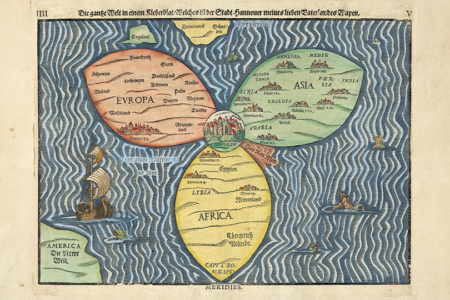Purim: The Diverted Destruction
The struggles and sufferings of the Jewish people are well documented by history. No other people on the face of the earth have survived the face of persecution, the storms of world opposition and the sword of cruel destruction as often as the Jewish people. Jewish history runs red with the blood of 4,000 years of Satanic programs to systematically exterminate them.
On the 2nd of March the Jewish community will once more celebrate one of the greatest deliverances called Purim. Originally the feast was kept on the 14fh day of Adar (Feb. – Mar.). Purim comes from the word “Pur” (Est. 9:26) which means “lots”, the method used by Haman to select the day he planned to massacre the Jewish population of the Persian Empire (Est. 3:6, 7).
The story of Purim, which unfolds in the land of Persia, is beautifully told in the book of Esther. A remnant of Jews had returned to the land of Israel after the Babylonian captivity (Ezra 1-6), but many Jewish families, who were well established in Babylon, chose to remain. Among those remaining were Mordecai and Esther.
The ruler Ahasuerus (Gr. Xerxes) sat on the Persian throne ruling over 127 provinces, stretching from India to Ethiopia (Est. 1:1). In the third year of his reign he called for an elaborate banquet to be held. On the seventh day of the feast, while in a drunken stupor, he requested that his wife, Vashti, exhibit her beauty before the court. Vashti refused to obey Ahasuerus, so he divorced her and decreed that every man in his kingdom was to be the ruler of his house (Est 1:22). A new wife was sought to replace Vashti, and a beautiful Jewess by the name of Esther was chosen (Est. 2:7-9). Obeying the advice of her cousin, Mordecai, Esther concealed her Jewish identity from King Ahasuerus (Est.2:20).
Haman, the prime minister to Ahasuerus, was a proud, self-seeking, cruel leader demanding that all the king’s servants bow in obeisance unto him. But Mordecai refused to bow in obeisance to Haman (Est. 3:2). Haman’s deep hatred for the Jews, and especially Mordecai, motivated him to contrive a scheme in which he could destroy the Jewish people. In the twelfth year of Ahasuerus, Haman offered him ten thousand talents of silver if he were permitted to destroy all the Jews under his rule (Est. 3:9). Ahasuerus refused the silver, but made a decree that all Jews should be systematically killed in the provinces under his rule (Est. 3:13-15).
Shocked by the decree, Mordecai warned Esther of the coming genocide which was about to befall their people. He made Esther aware that God had providentially given her a high position in the Persian kingdom “for such a time as this” (Est. 4:14) — a time to save her people. Esther, realizing that she would perish along with her people, acted quickly in their behalf (Est. 4:13), She put her life on the line and approached King Ahasuerus, for it was against Persian law to approach the king without first being biddened (Est. 4:16).
The Jewish kingdom fasted and prayed for three days in behalf of Esther’s bold move. On the third day Esther, dressed in her royal apparel, went and stood in the inner court of the king’s house. The king’s golden scepter was extended to Esther granting her approval to approach him to make her request known (Est. 5:1-5). Esther requested that a banquet be called in honor of the king and Haman. The king willingly obliged and promised to grant any request which Esther might ask up to half of his kingdom. At the banquet Esther revealed the Satanic plot of Haman unto the king pleading for Ahasuerus to spare the Jewish people from destruction. The king could not withdraw his original decree which called for the demise of the Jews. But he granted a second decree in which the Jewish people were permitted to arm themselves against the provinces which would seek their destruction (Esf. 8:9-14). Struck by fear of the Jews many of the provinces took no action against them, but those choosing to fight the Jews were destroyed by them (Est. 9:1-11). Ironically, Haman and his ten sons were hung on the gallows constructed to hang Mordecai (Est. 7:10; 9:14). It was Mordecai who instituted the feast of Purim to commemorate God’s great deliverance (Est. 9:20-28). The Jews of Sushan kept the 15fh day of Adar to celebrate their deliverance from Haman (Est. 9:18), which became known as Sushan Purim.
On the eve of Purim Jewish people gather together in their synagogues for the reading of Esther, more popularly called the Megillah . The Megillah is read a second time on the day of Purim at the morning service (Heb. shachrit). All, from grandparents to the youngest child, are required to listen to the story of Esther on the day of Purim. When Haman’s name is mentioned the children in the congregation will shake noisemakers, boo and stamp their feet to blot out his name and memory; and the name of Amalek (Deut. 25:19; Est. 3:1; I Sam. 15:8, 9), since Haman was an Amalekite. In some oriental countries an effigy of Haman is hung and burned. The person reading the book of Esther will recite the name of Haman’s ten sons in one breath, since they were hung together (Est. 9:7-10).
In Esther we have a description of how the Jewish people are to celebrate the day:
As the days wherein the Jews rested from their enemies, and the month which was turned unto them from sorrow to joy, and from mourning info a good day: that they should make them days of feasting and joy, and of sending portions one to another, and gifts to the poor (Est. 9:22).
Today, the Jewish community celebrates in a similar way. First, a festive dinner (Heb. sendah) is held in the afternoon, celebrating the joyous deliverance which the Jewish people experienced. Children will wear costumes and carnivals are held in many synagogues. Such foods as boiled beans, peas and hamantaschens (Haman’s ears) are eaten at Purim. A hamantaschen is a triangular-shaped pastry filled with poppy seed, prune and other fillings. They are served at this time, recalling the triangular hat worn by Haman. Secondly, it is required that each person send portions of food to friends and neighbors. At least two items., fruit, candy or baked foods are sent to one person, usually delivered by the children. Thirdly, it is required that each person give gifts to two poor people; even the poor are required to give as well, In various areas Jewish people will perform Purim plays (Heb. Purim-Shpil) commemorating the great miracle of deliverance. In talmudic institutions a rabbi (who is of quick wit) is permitted freedom of speech to joke in sermonic satire about various rabbis in town, or even the head of the school. Since Purim is a minor festival, work is permitted on this day, although many people take the day off and celebrate according to Jewish tradition. Some reform congregations have discontinued the keeping of Purim, while others still celebrate its traditions.
God has promised that as long as the earth exists the Jew will survive all attempts at his destruction. Jeremiah writes:
Thus saith the Lord, which giveth the sun for a light by day, and the ordinances of the moon and of the stars for a light by night, which divideth the sea when its waves therefore roar; The Lord of hosts is his name: If those ordinances depart from before me, saith the Lord, then the seed of Israel also shall cease from being a nation before me for ever (Jer. 31:35, 36).
This would be an appropriate time to let your Jewish friends know that you love them and want their best. Let that person know that no matter what storms of world opposition might blow to destroy them. God loves them with an everlasting love (Jer. 31:3). Share the Messiah with them, the only One who can bring true Purim-peace.







